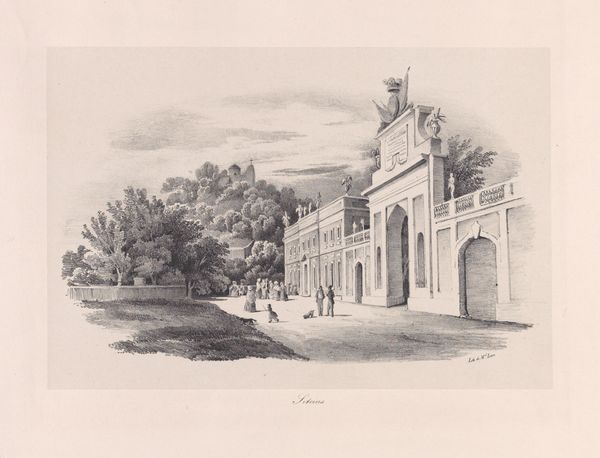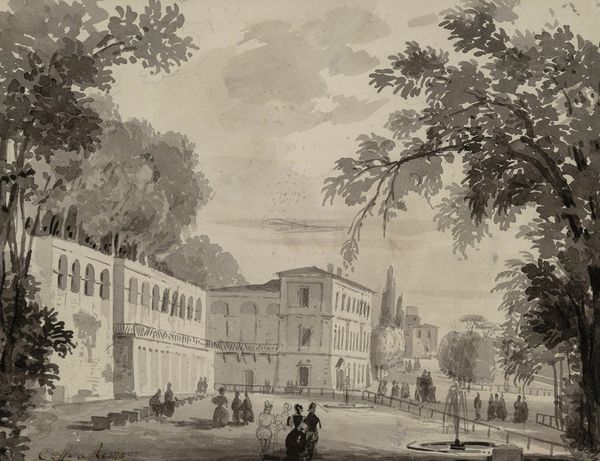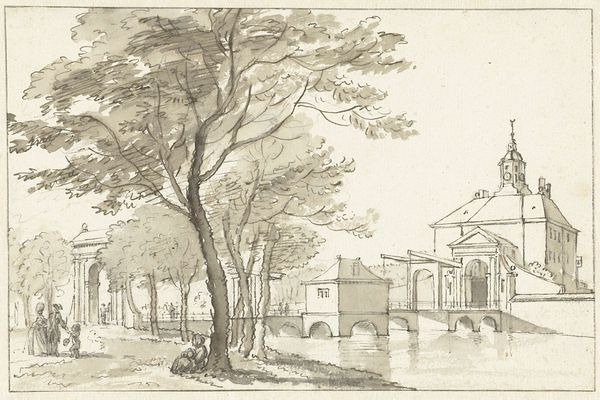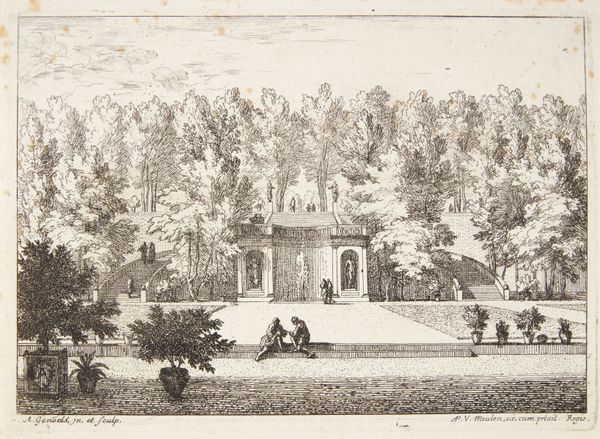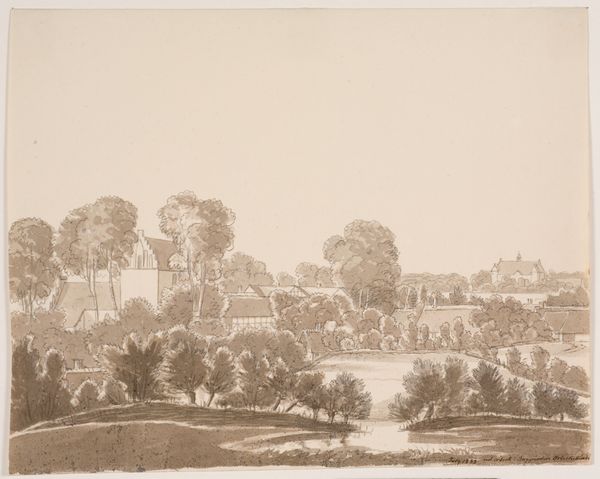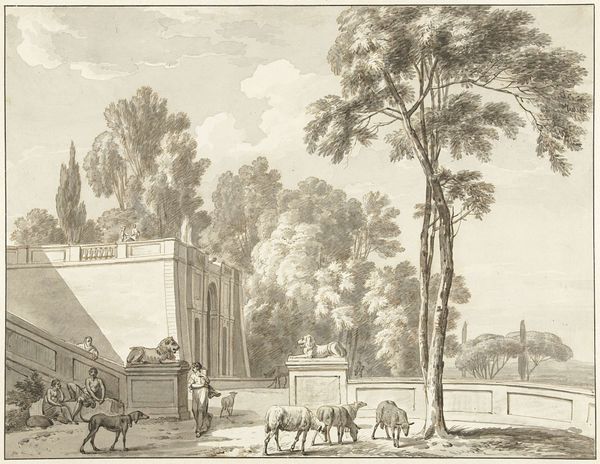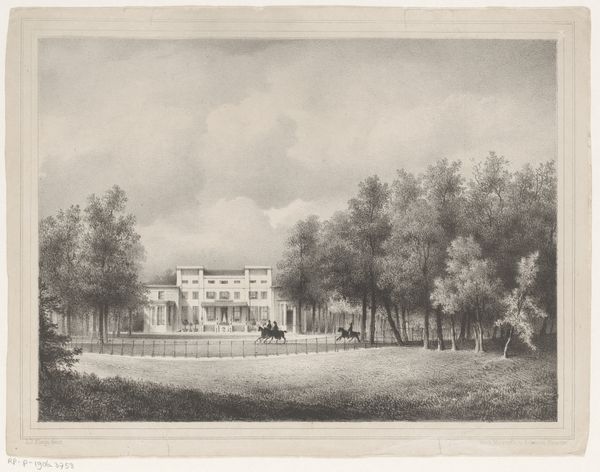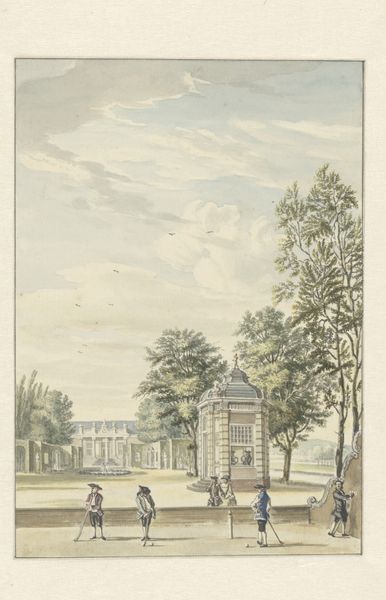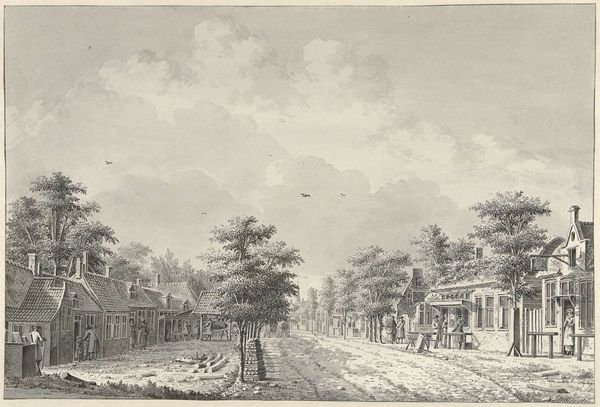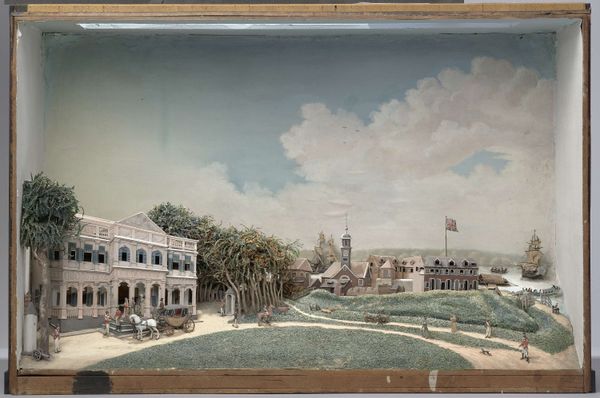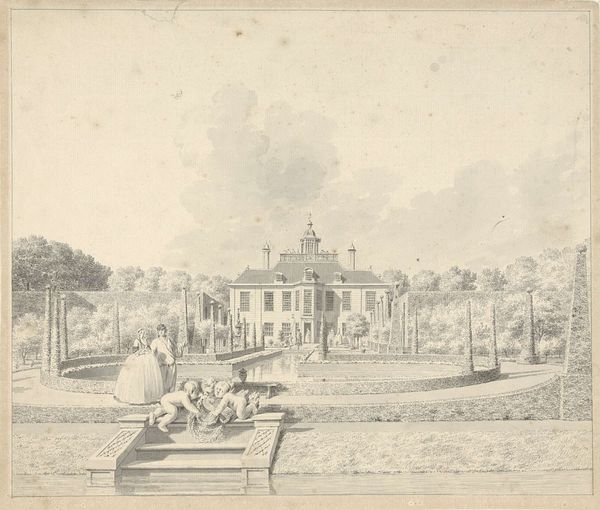
View of the Farm House with Screen to Stables and Farm Buildings to Sezincote House 1818
0:00
0:00
drawing, paper, ink
#
drawing
#
neoclacissism
#
landscape
#
paper
#
ink
#
geometric
#
romanticism
#
architectural drawing
#
cityscape
#
academic-art
Copyright: Public domain
Editor: So, this ink drawing, “View of the Farm House with Screen to Stables and Farm Buildings to Sezincote House,” was created in 1818 by John Martin. There’s a certain stillness to the landscape, despite the presence of architecture. It almost feels staged. What do you see in this piece that might speak to the art and culture of its time? Curator: What strikes me is how the scene constructs a particular vision of idealized rural life. Martin is not just depicting a farmhouse; he's presenting an estate, likely one catering to the sensibilities of the landed gentry. How does the rendering of the architecture play into that, do you think? The clean, geometric buildings exude a sense of order and control over the land. Editor: It’s true, the architecture and ordered landscaping imply control and wealth. The lines are very deliberate, despite being set in nature. I wonder how aware Martin was of his own potential role in glorifying that kind of power structure? Curator: An important question! Given the era, the romanticizing of rural life by the wealthy was a common theme. Think about the socio-political context: industrialization was rapidly changing the English landscape, so depictions of serene countryside offered an escape, and this artistic representation becomes tied to certain class interests and nostalgias. Where do you think its ties to Neoclassicism become visible? Editor: Now that I think about it, the building’s design feels deliberate. The ordered structures evoke a sense of Roman ideals. Curator: Exactly! The visual language subtly reinforces a specific image of authority and heritage. Consider what these kinds of images do – what roles do they play in reinforcing social structures of that time, and maybe even now? Editor: I never thought about landscape art quite this way – as actively contributing to an ideology! Curator: Precisely. Art isn’t created in a vacuum. Thinking about art as participating in conversations of power, wealth, and ideology changes how we look at even seemingly quiet landscape drawings.
Comments
No comments
Be the first to comment and join the conversation on the ultimate creative platform.
